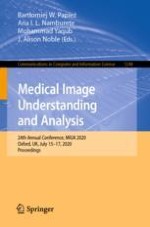2020 | Book
Medical Image Understanding and Analysis
24th Annual Conference, MIUA 2020, Oxford, UK, July 15-17, 2020, Proceedings
Editors: Bartłomiej W. Papież, Ana I. L. Namburete, Mohammad Yaqub, J. Alison Noble
Publisher: Springer International Publishing
Book Series : Communications in Computer and Information Science
